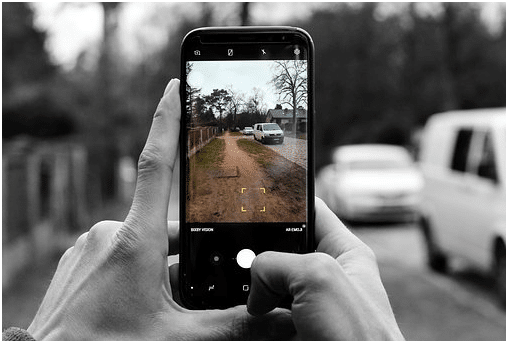VoIP and Home Alarm Systems
Today the mature alarm system industry that is used to protect only big businesses has now repurposed the same technology (like sensors, controllers, and monitoring) for the consumer side with acceptable services and economics to the average homeowner. This new affordability and the convergence of Home Safety plus Home Automation is driving the expectation that VoIP can also be integrated here for greater convenience and savings.
Today’s tech-savvy homeowner with VoIP investments and alarm needs may have suffered some finger-pointing in the past when 2 service providers were brought together. Trial and error attempts to have them work together within the home, sometimes with mixed results. However, there are conflicts (or assumed risk) with VoIP technology being on a critical path and while being dependant on local electricity to keep your calls and monitoring flowing to the internet.
These two industries are recognizing the consumer base is growing for both home alarm systems and VoIP services. While initially, alarm companies were not recommending any VoIP pairing, recent advancements have begun to pave the road to innovative designs with stable results. An educated consumer can now design his/her own or select solutions that are reliable and technically sound.
What Is This All About?
Although placing high-quality voice calls and IoT’s reliability commonplace on the internet, it did not grow up with home security monitoring in mind. These worlds are coming to grips with the unique challenges and potential advantages of working together. As nearly every homeowner now comfortably runs a wireless LAN and IP router, they are also looking to reduce budgets and targeting that legacy local line for cancelation. Many new couples getting their first house or apartment are electing to not order a phone line at all in lieu of individual mobile phones. The issue is that the most mature and reliable alarm systems for homes grew up on the local line as a default connection to the remote monitoring service.
To drill down a bit more on the current technology dilemmas and choices:
- The local phone line draws power from the local telephone station, therefore it can continue alarming and sending monitoring data during neighborhood power failures.
- Most household LANs and IP routers are not power protected and will likely be a single point of failure for VoIP alarm monitoring during a power outage
- Some alarm consoles will deploy a battery as a backup to keep local monitoring to sensors working during a power interruption
- The local phone line (or internet cable) can be physically cut by the ambitious thief to interrupt communications to the monitoring center and authorities
- An Analog Telephone Adaptor device (ATA) can interface legacy phones, faxes, and analog alarm systems output to a VOIP router. These are inexpensive devices that have limited support. Every technology combination has not been tested together. Support risks are on the consumer’s side.
- Alarm systems (traditional or VoIP) can use cellular data as the primary or backup method of reaching the monitoring center. A SIM card and data plan is required
As you can see there are now multiple moving parts as the tech-savvy homeowner wants to leverage the VoIP investments and still have the best of breed home monitoring and automation. To the pioneer (and leaders) of home security solutions the VoIP application is an afterthought that requires integration or a forced retrofit. To the midrange VoIP service providers, continuous quality improvements were the priority of the last 10 years and the risk of a local power failure was always known and accepted.
Occasionally the consumer can be caught in the middle with contractual caveats and disclaimers. Each combination of VoIP provider and alarm solution providers can present unique scenarios that cannot be predicted and with support guarantees.
Obviously, these worlds are converging via the demands of the public that demand convenience, simple economic solutions. Eventually, this will be an everyday cloud solution with plug-and-play IoT Sensors in your home. Until that vision becomes fully true, there are some probing questions below to ask of service providers during your research and selection process.
Aside from Do-it-Myself kits and mid-range Home Alarm providers are the larger Canadian Telecom players like Bell, TELUS and Rogers offer packages for the Smart Home with Security Monitoring. They are best to offer combinations of backup transports in with local line, cable, cellular, fiber, or internet monitoring options as they can offer 2 or more to your location. Overall they may not be leaders in the mature onsite technology offers. It may be a challenge for them to offer flexible contract commitments for the smaller spender asking for high-touch support.
How VoIP Security Works
Most home alarm systems will consist of the following major components of a central panel, sensors for windows and doors, indoor & outdoor cameras, 2-way radio to a professional monitoring center. From there optional devices are added to expand further Home Safety like smoke alarms, carbon monoxide, and flood sensors. Table stakes now is an expectation of an accompanying mobile application for Android or iOS that will let you see and remotely control each device as the central panel does.
The controlling brain is the Central Panel which is often now an LCD touch screen with some intuition on how the user wants to program the sensors, cameras, and all other inputs. Be familiar with the Central Panel before you make a purchase. Determine if all family members can operate it all if required.
Each offer will have a remote monitoring center that will look for pre-determined major events and carry out some scripted action plans for remediation. Actions may include contacting the owners to discuss the alarm and confirm the best course of action.
‘Home Automation’ is also melding into the Home Alarm landscape with smart locks, remote lighting control, remote thermostats, video doorbells, and even remote garage door openers. Today the tech-savvy homeowner can fully automate the home comfort experience with some peace of mind that they are monitored, safer, and saving money. Today’s technology that creates issues will also find solutions when enough consumers have identified common issues.
Home Alarm Systems can now take advantage of:
- Reduced heating costs while controlling the thermostat during known periods of absence
- Reduced theft as the garage door opens specifically for the courier delivering Amazon packages
- Remotely changing the door combinations for family members locked out, or just dropping in
- Reduced home insurance costs when instrumented for flood and fire detection
- Wireless (WiFi) sensors and cameras can be moved easily with little reconfiguration
- Geo-control the front door lock via a smartphone as you approach with heavy packages
- Reduced home break-in losses as the smartphone can instantly alert you to intruders
- Voice recognition devices such as Alexa (and others) can integrate with Home Automation
Fire Alarm Systems using VoIP technology
Unlike other sensors, it is imperative to periodically test smoke and fire alarm systems. Moreover, the carbon monoxide best before dates need to be followed and expired units need prompt replacement.
Remember that you cannot assume that the electricity is still powering the Alarm Systems, in fact, the fire may have caused the power to go out. Remember that the Monitoring Centre will first make 2 attempts of contacting the owners of the alarm system and will not directly contact the local fire department by default.
Without VoIP, on large estates and business buildings, Keltron (for example) offers coded fire alarm equipment that enables a remote operator to locate the exact location of the alarm from a Fire Alarm Control Panel (FACP). It will output a coded signal on the belt loop. Often the first responders use this information to pinpoint the fire quickly within large spaces.
Security and Alarms Systems Pros and Cons
While investigating and selecting Home Alarms Systems with VoIP interconnection the educated consumer should visit these parameters internally and with any potential Service Provider:
- Are there long-term contracts with cancellation penalties?
- Are there set-up fees and equipment financing options?
- Is there a Bronze, Silver, and Gold level of service choices including DIY?
- Is the solution scalable plus have a ‘pay-as-you-grow model?
- Are there redundancy options during power fail?
- Are there WAN redundancy options that are proven with this VoIP solution?
- What is the cost of the cellular WAN as the main network or backup path?
- Do you have testimonials with my combination of VoIP and Security solutions?
- Do you have a Professional Services option to integrate the alarm system and VoIP?
- Is there an intuitive and comprehensive console that controls all aspects of the service?
- Is there a smartphone application that gives me remote visibility and control?
Ultimately the consumer will need to reflect on the investment needed for WAN path redundancy and any associated expense it brings along. This is a fast-changing topic with new capabilities offered every year. Any internet research of articles more than 18 months old may needlessly scare off or mislead your decision. There are numerous success stories. Remember that there is some ‘safety in numbers’ so ask for proven integration results, and follow the reviews from your peers to gain insights on the top VoIP providers.


